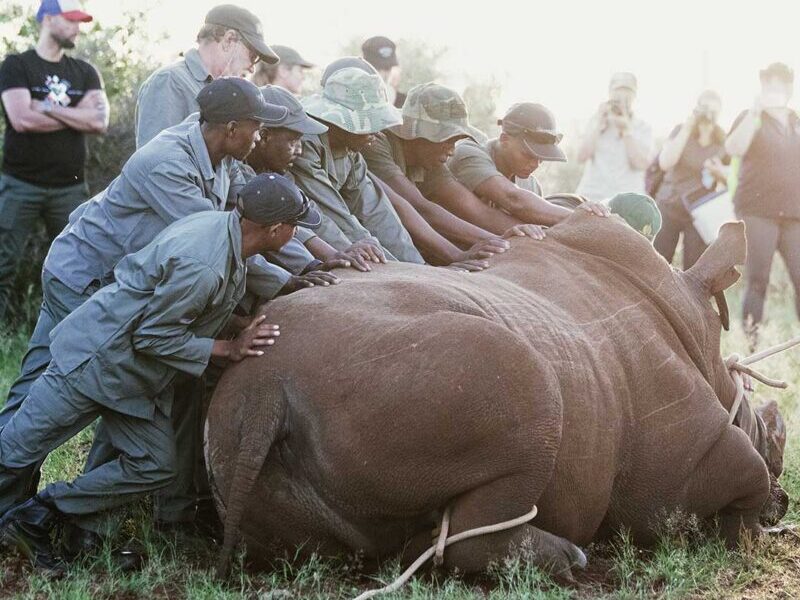In a significant breakthrough for rhino conservation, scientists have successfully created three northern white rhino embryos. With the last remaining male northern white rhino dying in 2018 and only two critically endangered females left in the world, this is a massive step for the subspecies’ survival. Can the white rhino be saved from extinction?
Created in Avantea laboratory in Italy, the embryos were formed by inseminating frozen sperm into eggs taken from the two Kenyan-based females. The fertilised eggs will be transferred into a younger surrogate southern white rhino as the two remaining northern white females are too old to carry a pregnancy.
HOW RESEARCHERS PLAN TO SAVE THE WHITE RHINO
Researchers of the “BioRescue” project say their goal is to create a viable (>20 unrelated animals) breeding population of northern white rhinos. But, they warn, this could take decades and is not without challenges. Since the population of northern white rhino is so small, genetic diversity will remain low for this endangered species.

At Rockwood, we support all scientific research efforts to preserve genetic material and diversity for rhino conservation. With the recently created rhino embryos being significant in preserving the northern white rhino, the method used can also contribute to the survival of other endangered rhino species.
Collecting genetic material of as many different rhino populations and individuals as possible is vital to global rhino conservation efforts. If rhino subspecies numbers get critically low, genes that have been lost due to decreasing numbers can then be reintroduced.
View the video here:

HOW ROCKWOOD HAS HELPED THE WHITE RHINO
In 2019, Rockwood hosted the ground-breaking Hemmersbach Rhino Force Cryovault project, this breakthrough for endangered species is led by some of the world’s leaders in genetic research. Their aim is to create the biggest genetic reservoir for southern white rhinos in the world. Sperm, eggs and other genetic material of African rhinos is collected, frozen and stored in a biobank for future use. These collections contribute to population genetics research and are used for rhino breeding projects through assisted reproduction technologies.
DNA research at Rockwood could save the endangered southern white rhino species.
OUR GOAL FOR THE FUTURE OF THE WHITE RHINO
Our goal at Rockwood is to achieve healthy genetic diversity within our population of southern white rhinos in South Africa. We do this by obtaining and studying a detailed DNA profile on each of our rhinos. We can then select which males and females to breed, aiming to create the largest genetic diverse gene pool possible.
Once the DNA profiles of all Rockwood’s rhinos are known, we will expand our research to other locations in the country, including national parks, where we can swap bulls with “new” genes. By doing this we’ll be able to pass fresh genes on to other areas and create healthier and genetically robust populations of southern white rhino.
We’re aiming to create a higher genetic diversity within the population at Rockwood than anywhere else in the world.
Captive breeding of endangered species provides scientists with the benefit of increasing the gene pool of species. In the wild this is not possible. But genetic selection is highly critical because southern white rhinos went through a genetic bottleneck in the early 1900s. If captive breeding programmes are not done properly, it could have the opposite effect and create genetic weaknesses within a rhino species population. This is particularly crucial where rhino populations numbers are greatly diminished.
We believe our approach at Rockwood will eventually lead to a positive effect on the genetic diversity of the entire southern white rhino population.

WE ARE RUNNING OUT OF TIME.
As guardians to over 400 endangered southern white rhino, Rockwood welcomes researchers, conservationists and ethically-minded hunters to help contribute to the further study and science in preserving rhino populations.
We strive to stay abreast with globally advanced conservation techniques for the benefit of all rhino species.
But we can’t do it alone. We need your help.

